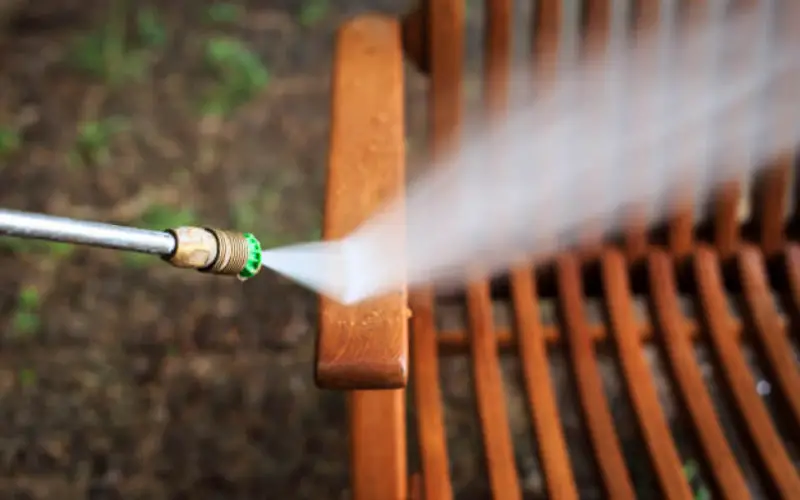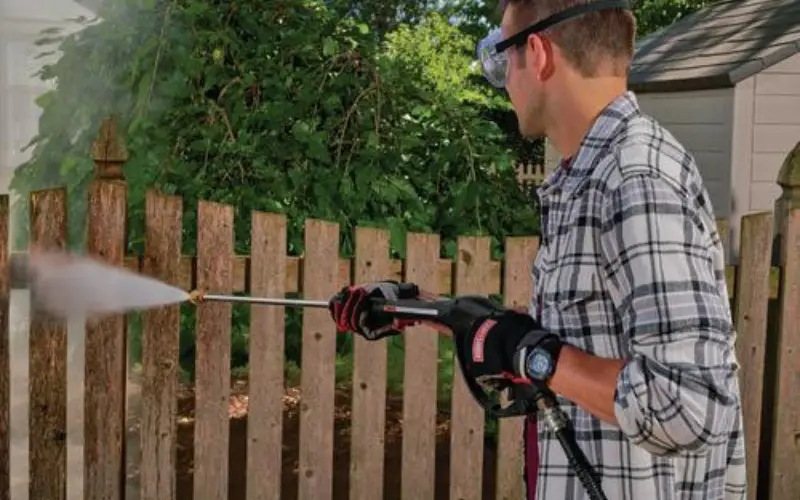The importance of a pressure washer in our homes, especially in this day and age, can never be overemphasized; it allows one to thoroughly clean different surfaces. But for you to get the best out of your pressure washer, you will have to use the right nozzle size.
There are different nozzle sizes of a pressure washer, and they are categorized based on the amount of pressure you require for the given cleaning power.
The industry concerned has made a universal color code used to identify the angle degree and pressure that the washer head release. The color codes are red, yellow, green, white, and black.
Pressure washers shoot out water in a triangular pattern. The spray pattern is described in angles, so you will see the different nozzles designated with different colors having the given angle of spray.
How Nozzle Tips Affect Water Pressure
The nozzle tip of your pressure washer will determine the pressure with which the water flows from the unit, the V-shaped angle of the spraying wand, and ultimately how much water is sprayed.
Even though the nozzle cannot increase the pressure above the pressure capacity of the washer, it can, however, affect the pressure of the water exiting the machine.
The implication is that you will get s higher pressure from a nozzle with a smaller orifice. This increased pressure results because less water is leaving the pressure washer.
The angle at which h the water exists in the pressure washer’s wand will determine how much area the water will cover. The greater the pressure, the more the water’s area will cover, and conversely.
How Do I Choose a Pressure Washer Nozzle?

Here are the different pressure washer nozzles, and the color depicts the amount of pressure and angle at which water exits the wand.
1. 0° Red nozzle
This is the most powerful nozzle of the pressure washer, and it is best for cleaning concrete floors and surfaces that can withstand the power and pressure of the water.
This is not the kind of nozzle you carelessly because it can slide through skin, wood, and siding. The small and very concentrated stream of water flows through the wand with the highest pressure and power.
This nozzle is used for spot cleaning, knocking down wasp bests, reaching high areas like soffits, and removing debris and super-tough stains from concrete and metal. Because this nozzle is at 0 degrees, it gives off a pinpoint jet stream that can even scratch metals.
Hence, you must ensure that you are properly clothed and wear a close-toed shoe when using this nozzle because it can injure users if they are not careful.
2. Yellow Tip Nozzle: 15 Degrees
This other nozzle sprays water at great pressure but not as much as the red nozzles. A 15-degree washer tip gives off the medium jet spray, and it is ideal for getting rid of tough stains.
It can cover a relatively large area because of its pressure, at least more than the red-colored nozzle.
This pressure nozzle can be used for heavy-duty cleaning of surfaces like roofs, drains, concrete garage floors, and the like.
You can use it to strip paints and remove dirt and mildew. It is powerful enough to scare wood or vinyl siding, so you must use it carefully.
3. Green Tip Nozzle: 25 Degrees
This nozzle has the widest range of cleaning potential because the spray is concentrated enough to thoroughly clean siding and wood, including brick, concrete, and aluminum trim.
The green-colored nozzle has a 25-degree spread and can cover 16 inches radius if you place it at 36 inches above the surface.
Most people use this green-colored nozzle for a soft wash rinse and most pressure washing chores, especially for cleaning decks, driveways, paths, and places around the house. It is gentle yet powerful enough to give cars, boosts, and trucks a good clean.
4. White Tip Nozzle: 40 Degrees
This nozzle can be the opposite end of the spectrum compared to the red counterpart because it has low pressure, a wide spraying pattern, and coverage and is used in cleaning very delicate surfaces.
At a 40-degree spray angle, it gets a job done faster. You can use this nozzle for cars, boats, windows, blinds, and general cleaning large areas.
5. Black Attachment: 60 to 65 Degrees
If you are looking for nozzles for removing dirt, mildew, and debris, then the black-colored is not for you because it doesn’t have that much pressure and power.
It is called a detergent nozzle or soaping black tip because it is best for getting a surface wet for applying detergents or chemicals. Soap and water can get out of this nozzle because of the large orifice of the wand.
You use this nozzle to activate a chemical injector on your pressure washer. The pressure is comparable to that of a shower and cannot be used for any serious cleaning.
6. Turbo Nozzle
This innovative solution seems to give a wider coverage for a nozzle with very high pressure. This combines the advantages of a red nozzle (high pressure for tough stains and dirt) and the wider coverage of the white-colored nozzle.
Before this nozzle, test it first on a small area where you want to clean to ensure that it is not too powerful for the surface you want to be cleaned.
If you must use it on clean, softer concrete or such surfaces, you should pace the pressure washer rapidly on the surface to avoid any damage.
How to Be Certain You’re Using The Right Size Nozzle
Many people know how to take care of their pressure washer, and they keenly Maintain it for optimum performance. Still, they pay little or no attention to the nozzle size they use for their cleaning, and they even interchange nozzle on any pressure washer because they believe that since nozzles have standard thread sizes in the different colors: (red, yellow, green, white, and black) they can use the nozzle interchangeable on any machine.
Pressure washer nozzles are manufactured specifically for each machine’s volume and pressure. Each nozzle has a different orifice size. They are stamped with a number (usually 5 digits), indicating the nozzle size and the fan size.
So if you have a nozzle with the number 40055, it means that it has a 40-degree fan pattern, and its size is 5.5.
Many people make a convention of using a larger nozzle size, which means they will be working with reduced water pressure to not damage the surface they want to clean.
This reduces the machine’s efficiency and increases the amount of time it takes to get the cleaning done. This leads to more costs in terms of labor and time.
If you decide to use a smaller nozzle than the one specified for a given machine, you will be giving more pressure to the machine due to the resistance of pushing water through a smaller hole.
This will overload the machine and cause untold wear and tear that will reduce the machine’s useful life span and increase the frequency of repairs and maintenance.
This is why many pressure washer machines’ motor has an increased amp draw, which will cause the breakers to trip and damage the machine’s electrical components, which culminates in the entire machine parking up.
It is important that you note that blockage, operator misuse of the pressure washer, erosion, debris, and hard water are some of the water that can change the size of a nozzle; hence it is important that you inspect the nozzle from time to time and replace the damaged nozzle.
Conclusion
To wrap it up, we will state that the key takeaway from all this is that the right pressure washer nozzle or top should be used for the specific cleaning needs you have.
The color of the nozzles simplifies this, which means there is little room for any confusion. While the red 0-degree spray pattern has a lot of power and pressure and is great for cleaning very tough stains on hard surfaces, the black/ soap nozzle has the least power and pressure and is used to clean very delicate surfaces. So go ahead and use the right nozzle for the right job.
Helpful Links:
- Spark Plug Socket Sizes
- What Sprinkler Has the Most Coverage?
- What Is The Most Efficient Sprinkler Head?
- Why Is My Echo Weed Eater Won’t Start
- How To Care For Your Leaf Blower Batteries
We trust this article helped you understand how to choose a pressure washer nozzle. You may also want to check Why Your Echo Weed Eater Won’t Start.
Thanks for taking the time to read our article, and we hope you find it helpful. Would you mind leaving a comment below if you have any suggestions?
Kindly reach out to people by sharing this post on social media.
If you liked this article, then please follow us on Facebook, Instagram, Twitter, and Pinterest.

